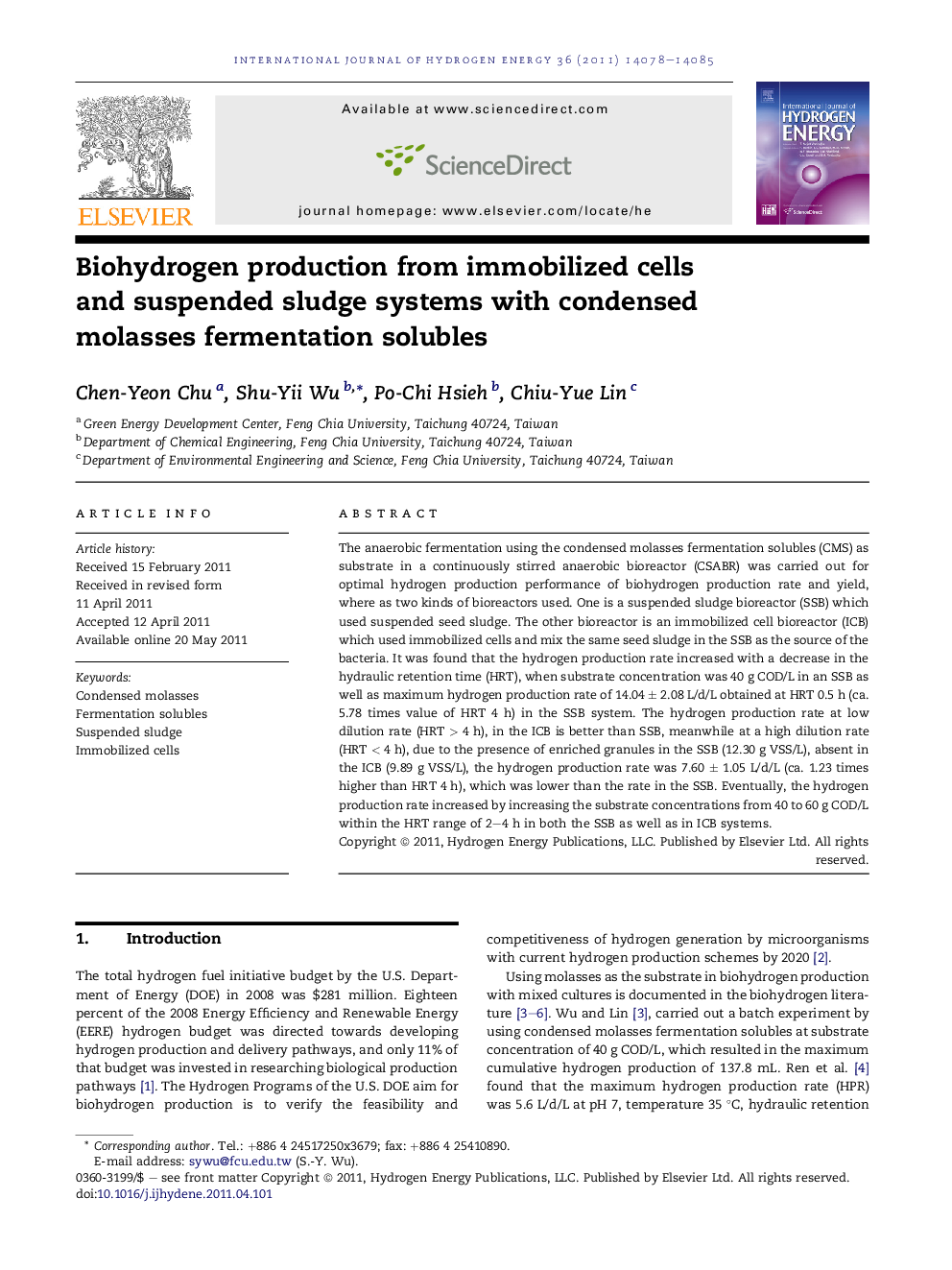| Article ID | Journal | Published Year | Pages | File Type |
|---|---|---|---|---|
| 1278763 | International Journal of Hydrogen Energy | 2011 | 8 Pages |
The anaerobic fermentation using the condensed molasses fermentation solubles (CMS) as substrate in a continuously stirred anaerobic bioreactor (CSABR) was carried out for optimal hydrogen production performance of biohydrogen production rate and yield, where as two kinds of bioreactors used. One is a suspended sludge bioreactor (SSB) which used suspended seed sludge. The other bioreactor is an immobilized cell bioreactor (ICB) which used immobilized cells and mix the same seed sludge in the SSB as the source of the bacteria. It was found that the hydrogen production rate increased with a decrease in the hydraulic retention time (HRT), when substrate concentration was 40 g COD/L in an SSB as well as maximum hydrogen production rate of 14.04 ± 2.08 L/d/L obtained at HRT 0.5 h (ca. 5.78 times value of HRT 4 h) in the SSB system. The hydrogen production rate at low dilution rate (HRT > 4 h), in the ICB is better than SSB, meanwhile at a high dilution rate (HRT < 4 h), due to the presence of enriched granules in the SSB (12.30 g VSS/L), absent in the ICB (9.89 g VSS/L), the hydrogen production rate was 7.60 ± 1.05 L/d/L (ca. 1.23 times higher than HRT 4 h), which was lower than the rate in the SSB. Eventually, the hydrogen production rate increased by increasing the substrate concentrations from 40 to 60 g COD/L within the HRT range of 2–4 h in both the SSB as well as in ICB systems.
► The biohydrogen production rate was increased by decreasing the HRT till to 0.5 h. ► The steady-state maximum HPR was 14.04 ± 2.08 at HRT 0.5 h in the SSB. ► The steady-state maximum HPR was 7.60 ± 1.05 L/d/L at HRT 0.5 h in the ICB. ► The strategy of lowering the HRT produces more biohydrogen and lactic acid.
